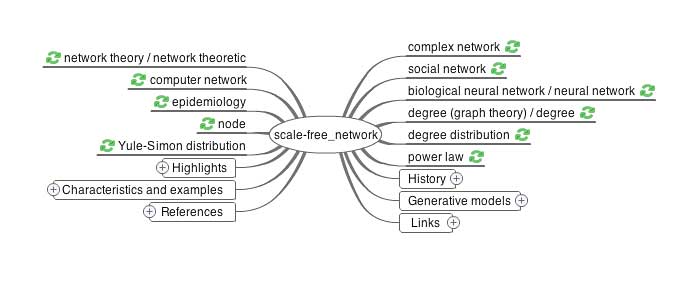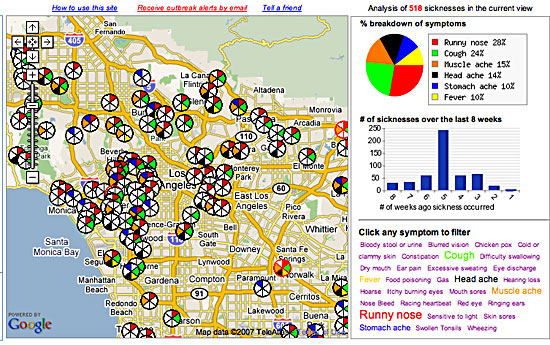David Weinberger’s new book, Everything is Miscellaneous, was published yesterday. Lee Rainie, Director of the Pew Internet and American Life Project, has done an interesting interview with him (published in pdf format).
There’s an illuminating passage in the interview in which he illustrates the implicit values embedded in the Dewey taxonomic system:
In Melvil Dewey’s world, all information is divided into ten major topical categories that might have made perfect sense to well-educated Westerners who shared Dewey’s frames of reference, but perhaps not to others. For instance, Dewey assigned the 800-899 block of numbers to literature and then doled out numbers 800-889 to American, European and classical languages. Thus, he squeezed every other bit of literature into the 10 remaining digits. Among other things, that means Russian literature did not even get its own whole number. It comes under 891.7, amidst East Indo-European and Celtic literatures.
It was also perfectly logical to Dewey that he list material relating to pets in the “technology” block of numbers in the 600s. Here’s how he worked that out:
600 Technology
630 Agriculture and related technologies
636 Animal husbandry
636.7 Dogs
636.8 Cats1
Weinberger has also done a DIY blurb for the book on the Berkman site.
We’re very good at organizing things in the real world. Whether we’re organizing a kitchen or laying out a new corporate head quarters, we have a variety of sophisticated techniques that we’re perfectly at home with. But, whether we arrange things alphabetically, by size, or by pecking order, when it comes to real objects, we always have to follow two basic principles: Everything has to go somewhere, and no thing can be in more than one place. That’s just how reality works.
But in the digital world we’re freed from those restrictions. Whether we’re organizing our downloaded songs, digital photos, an online store, or entire libraries of scientific information, we can put our electronic stuff into as many electronic folders as we want. If your catalog of engineering equipment is on line, you can put, say, a bolt into electronic bins according to size, material, cost, quality, and whether it’s been approved for outdoor use. In fact, you don’t even have to decide for your users which categories make sense. You can let them create their own categories by “tagging” electronic items however they like. At Flickr.com, for example, people tag photos with whatever will help them find those photos again, and users tag the millions of books cataloged at LibraryThing.com. Because these tags are public, you can click on one and find all the photos or books that others have tagged that way. This can be a powerful way to browse and an even more powerful way to do research collectively.
The alternative at such sites would be for the owners of the site to create their own taxonomy of categories. But every way we classify represents a set of interests. No taxonomy works for all interests and for all ways of thinking about a domain. For example, the vendor selling hardware such as bolts can anticipate that sometimes we’ll want to search by size, but not that someone is going to want to find a bolt to use as a gavel in a dollhouse or a bolt with a particular electrical resistance. There are an infinite number of ways we may want to slice up our world because there are an infinite number of human interests. In the physical world, we have to pick one, so we have expert taxonomists who make the best decision. But in the digital world, we can leave all the digital objects as a huge miscellaneous pile, each tagged with as much information about it as possible. Then, we can use computers to slice through the miscellany, organizing on the fly according to the categories that matter to us at that moment. So, it turns out that while the miscellaneous box represents the failure of real world organizational schemes, it is how digital organization succeeds.
This has an unsettling effect since we have large institutions that get much of their value — and their authority — from their privileged position as organizers of information. For example, the most prestigious position at a newspaper belongs to those who decide what goes in and which stories go on the front page. Likewise, businesses influence our decision processes by artfully arranging their offerings, and educators decide what will be taught and how topics relate. Now that the users and readers are able to do that for themselves, authority is rapidly shifting from those institutions to the new social networks through which we’re figuring out how to put things together for ourselves.
We are rapidly developing new principles and techniques for figuring out how to make sense of the miscellaneous so that it is more responsive to our needs, interests, and points of view. While the technology that’s emerging is powerful and fascinating, the more important change is occurring at the level of institutions and authority. That’s where we’ll see the real effect of the miscellaneous.
Later… A librarian friend writes: “I was once told that Dewey’s interest in classification was stimulated by the muddle in his mother’s jam cupboard which he sorted out and arranged nicely.” On such hinges does history turn!



